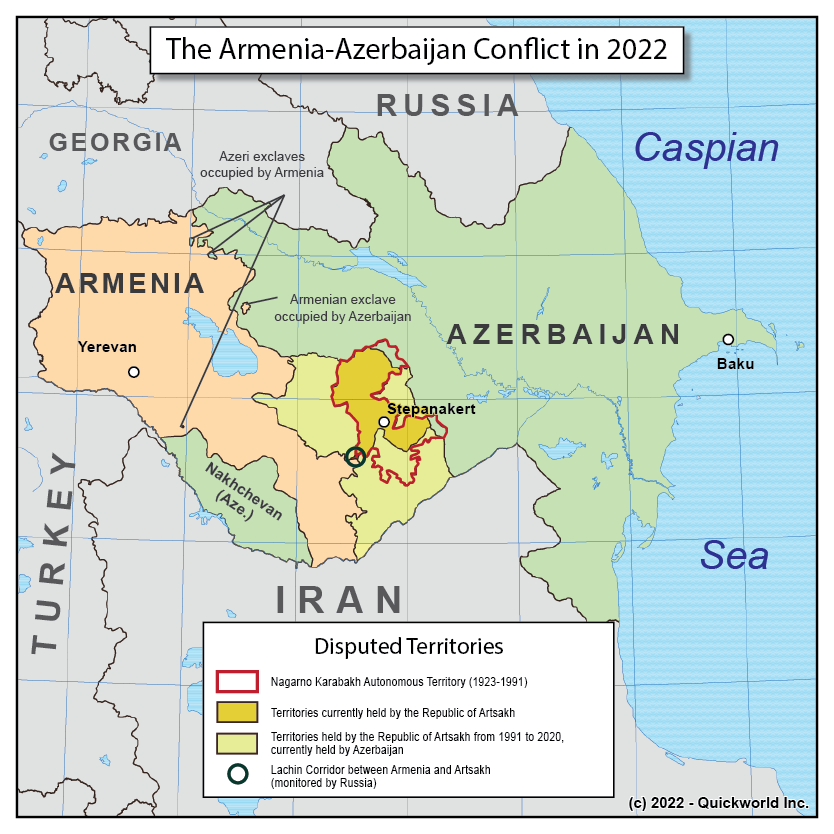This conflict is still very active today, more than 30 years after the end of the Soviet Union. Nagorno Karabakh is a very mountainous region in the Southern Caucasus, whose population is predominantly Armenian, but is surrounded by lands populated by Azeris. In the early stages of the Soviet Union, the area was granted the status of Autonomous Region (or Autonomous Oblast), while remaining a subdivision of the Azerbaijan Soviet Republic.
The dissolution of the Soviet Union led to the demand by the authorities of the Region to join the newly independent Armenian Republic. This was refused by the authorities of Azerbaijan, and this led to a unilateral declaration of independence, followed by an open conflict. By the time a ceasefire was signed in 1994, Nagorno Karabakh controlled an area that extended far beyond the confines of the Autonomous Region, and had a common border with Armenia. Its independence was not recognized by any UN member nation. It changed its name to the Republic of Artsakh in 2017, and the stalemate lasted until 2020, when the Azerbaijani forces, with the help of Turkey, overwhelmed the small state and retook most of its territory. A ceasefire was brokered by Russia and the much-reduced breakaway republic maintains a connection with the outside world through a small Russian-controlled corridor that links it to Armenia.
More on the Republic of Artsakh
The Nagorno Karabakh Conflict


